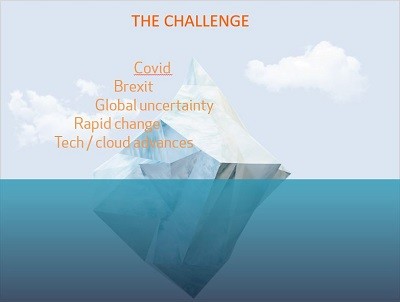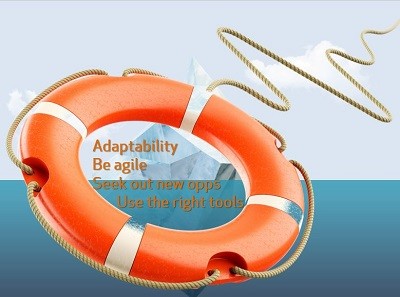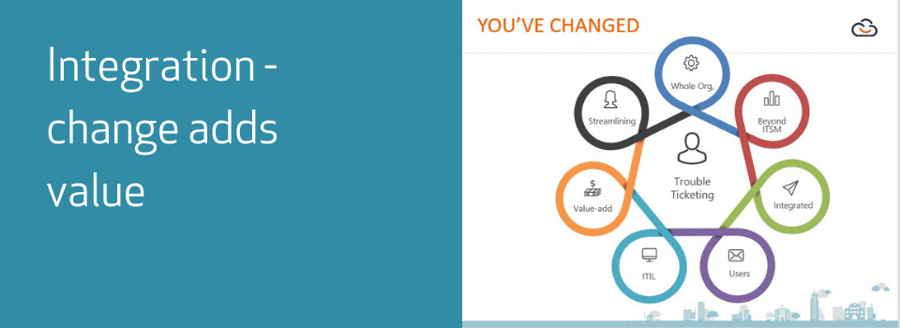Keeping track of change
Constants are easy to manage – where they exist – but variables are anything but. Hence, why “adds and changes” are regularly referred to as an IT managers’ worst nightm are. In any given, stable as is possible, global environment and economy, managing those adds and changes is challenging. But where we are right now – in 2020 – we are witnessing an ever-changing global landscape. So, marry this to what was already a radically changing IT landscape, thanks to cloud adoption, significant changes within a company’s IT infrastructure as job roles move around and “power” changes hands, and we have potential for chaos, crash and burn scenarios.
are. In any given, stable as is possible, global environment and economy, managing those adds and changes is challenging. But where we are right now – in 2020 – we are witnessing an ever-changing global landscape. So, marry this to what was already a radically changing IT landscape, thanks to cloud adoption, significant changes within a company’s IT infrastructure as job roles move around and “power” changes hands, and we have potential for chaos, crash and burn scenarios.
With respect to internal infrastructure adaptations within companies, control has – in many cases – changed hands, so admin-level, rather than tech-level individuals are increasingly given more significant roles in moving IT forward within the business. Over the past two decades, IT in general has seen a change in mindset, from technology-driven thinking to a solutions-based approach and this is being reflected within the infrastructure itself. The emerging DevOps and SecOps trends show increasing autonomy for certain aspects of IT and this is further intensified at board level as the quest for “agile IT” and digital transformation of the business intensifies. The contemporary IT footprint looks very different to what it did 10 years ago for sure, or even five years ago.
 Changes in workforce and workplace traditions brought on by the COVID-19 pandemic – and these are clearly ongoing – have only added to the speed of change and increased complexity of the company infrastructure. As such, ITSM – already extending out to areas of the business beyond IT, in what is known as ESM or Enterprise Service Management – needs to be both more flexible and efficient than ever. Change normally involves additional costs and these can quickly spiral out of control if the underlying infrastructure management isn’t in place to control this fundamental reshaping of businesses. So, yes, it’s a challenging time for businesses right now but, at the same time, those changing landscapes and uncertainty bring opportunities too, so long as you are ready to maximise those prospects. At an ITSM level, it’s about moving forward from the traditional role of service desk, without losing sight of that basic modus operandi – supporting the users. IT trouble ticketing management is still important, but service management now supports the whole company structure, not just IT. As such, it extends beyond the confines of an isolated ITSM application or platform, such as via integration with 3rd party tools.
Changes in workforce and workplace traditions brought on by the COVID-19 pandemic – and these are clearly ongoing – have only added to the speed of change and increased complexity of the company infrastructure. As such, ITSM – already extending out to areas of the business beyond IT, in what is known as ESM or Enterprise Service Management – needs to be both more flexible and efficient than ever. Change normally involves additional costs and these can quickly spiral out of control if the underlying infrastructure management isn’t in place to control this fundamental reshaping of businesses. So, yes, it’s a challenging time for businesses right now but, at the same time, those changing landscapes and uncertainty bring opportunities too, so long as you are ready to maximise those prospects. At an ITSM level, it’s about moving forward from the traditional role of service desk, without losing sight of that basic modus operandi – supporting the users. IT trouble ticketing management is still important, but service management now supports the whole company structure, not just IT. As such, it extends beyond the confines of an isolated ITSM application or platform, such as via integration with 3rd party tools.
Within the traditional confines of an ITIL: ITSM relationship, as the former has evolved far beyond its initial vision, so the latter has had to evolve in tandem. But expanding the scope of service management can create its own efficiencies, such as by giving users more self-help capabilities, as we’ve seen with self-service portal deployments, and a general streamlining of business processes and operations as a result. So there we go – service management moves from being the devil that was “necessary support cost evil” to business enhancer and potential saviour!
Steve Broadhead is a technology journalist, technical researcher & author, guitarist and occasional comedy writer, who brings his unique perspective to the world of ITSM through 30+ years’ association with the IT industry.
Watch the webinar recording of The Integrated Service Desk – extending boundaries adds value



.png)
